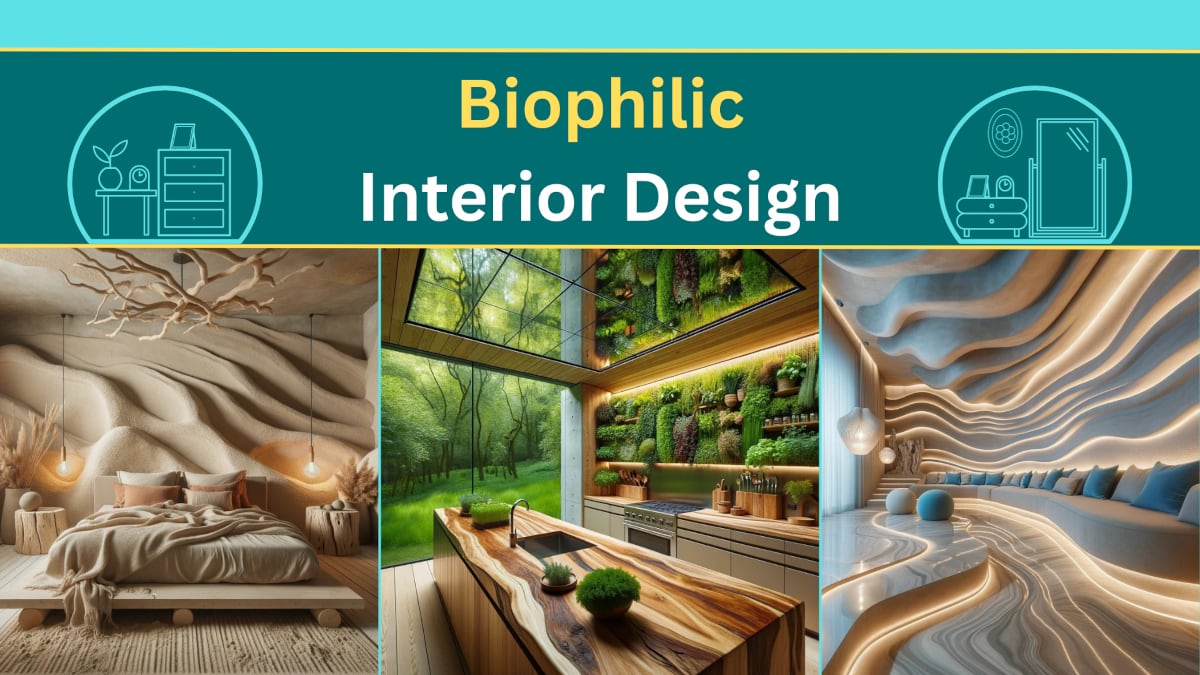Biophilic interior design is one of the most exciting and beneficial trends in interior design today. As a sustainability enthusiast, I’m fascinated by the potential of this home decor and design trend to create healthier, more inspiring spaces.
Key Takeaways
- Integrates nature into interiors for health and well-being.
- Utilizes natural light, materials, shapes, and greenery.
- Benefits include reduced stress, increased productivity, and improved mood.
- Easy implementation: add plants, maximize natural light, use organic materials.
- Effective in any space without major renovations.

Biophilic design for interiors is all about integrating nature into the built environment. The term “biophilic” comes from “biophilia,” meaning a love of life or living systems. Humans inherently crave connections with nature, so a biophilic design approach taps into that by bringing the outdoors in.

Biophilic design draws inspiration from the natural world to foster health, wellness, and positivity indoors. The goal is to create interior spaces that nurture our innate human affinity for nature through direct and indirect connections.
Some of the key principles of biophilic design include:
- Abundant natural light
- Fresh airflow
- Natural materials and finishes
- Evocative natural shapes and forms
- Interior greenery and garden spaces
- Natural imagery and views
- Curved lines and organic patterns
By thoughtfully incorporating these elements, biophilic interiors evoke feelings of tranquility, vitality, and comfort that we experience in natural settings.
How to Incorporate Biophilic Design in Your House?
Fortunately, you don’t need major renovations to make over your home or office with a biophilic design. Even small steps can make a difference. Here are some easy ways to bring the outside in:
Let Nature Shine In

Natural light nourishes the mind and body, so maximize it inside whenever possible. Install more windows, skylights, or solar tubes, and remove window treatments that block sunlight. If upgrades aren’t feasible, simply open blinds and curtains to let more daylight in.
Clear the Air
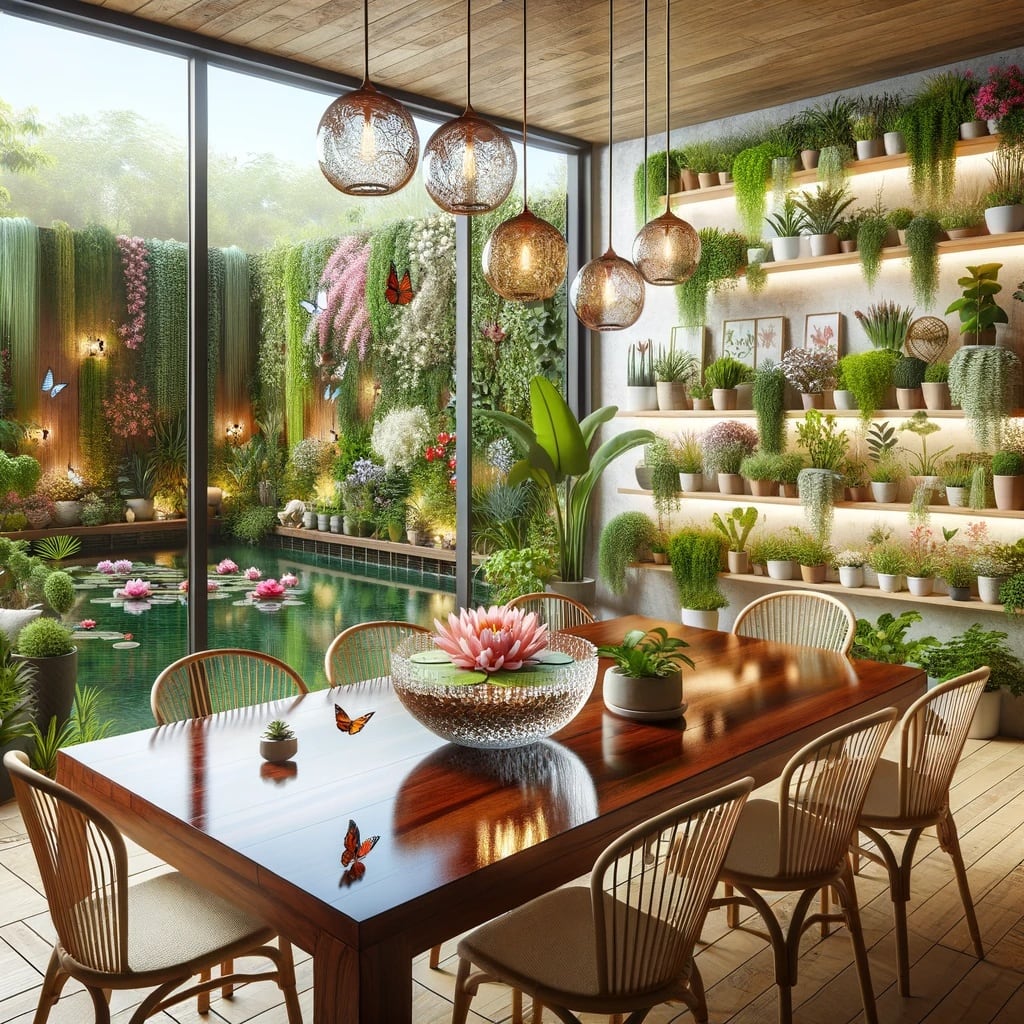
Breathing fresh, clean air is rejuvenating. Open windows regularly to ventilate rooms with outside air. Place air-purifying plants throughout your space: they filter pollutants. You can also install a ventilator to circulate fresh air.
Add Living Greenery
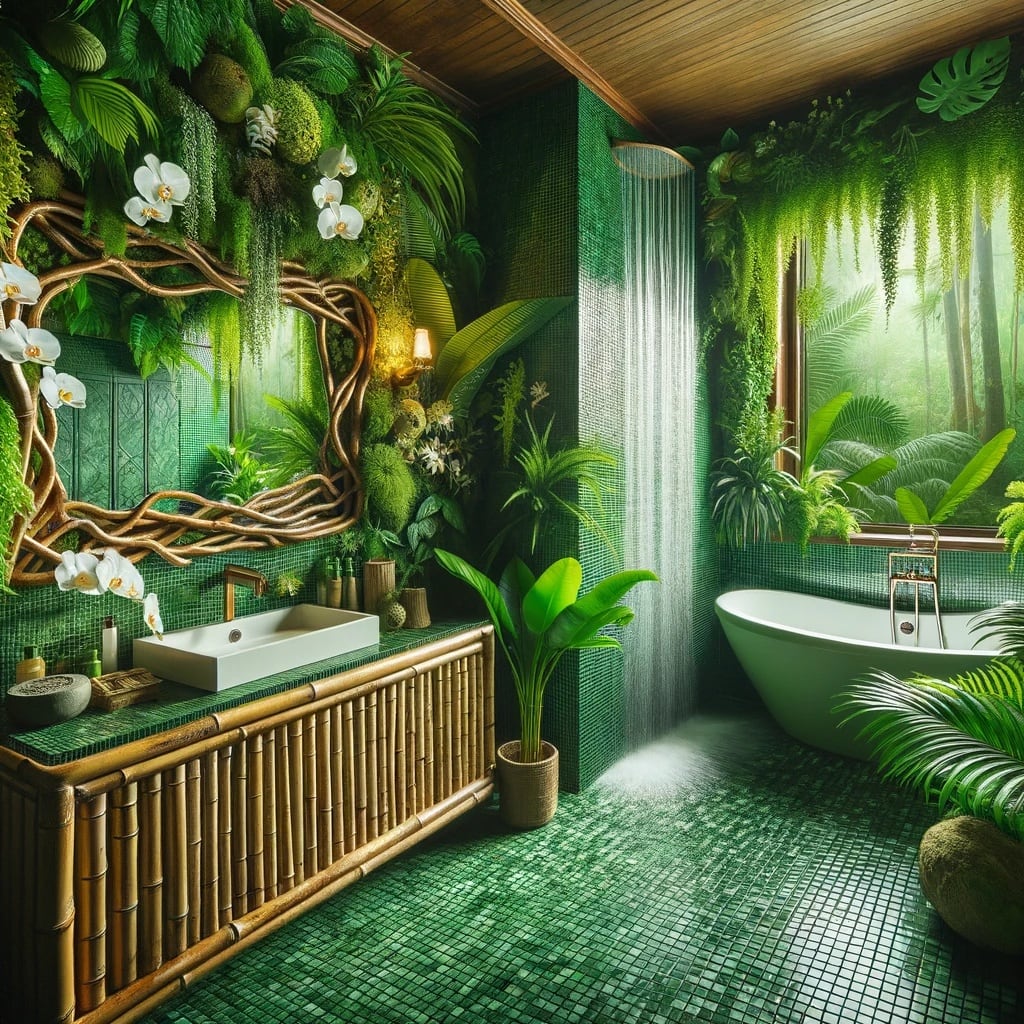
Fill your home or office with lush potted plants. Their presence instantly makes any indoor space feel more vibrant and tranquil. Go for leafy plants like ferns and palms, or add herbs and succulents. Vertical gardens are also a bold biophilic choice.
Choose Natural Materials
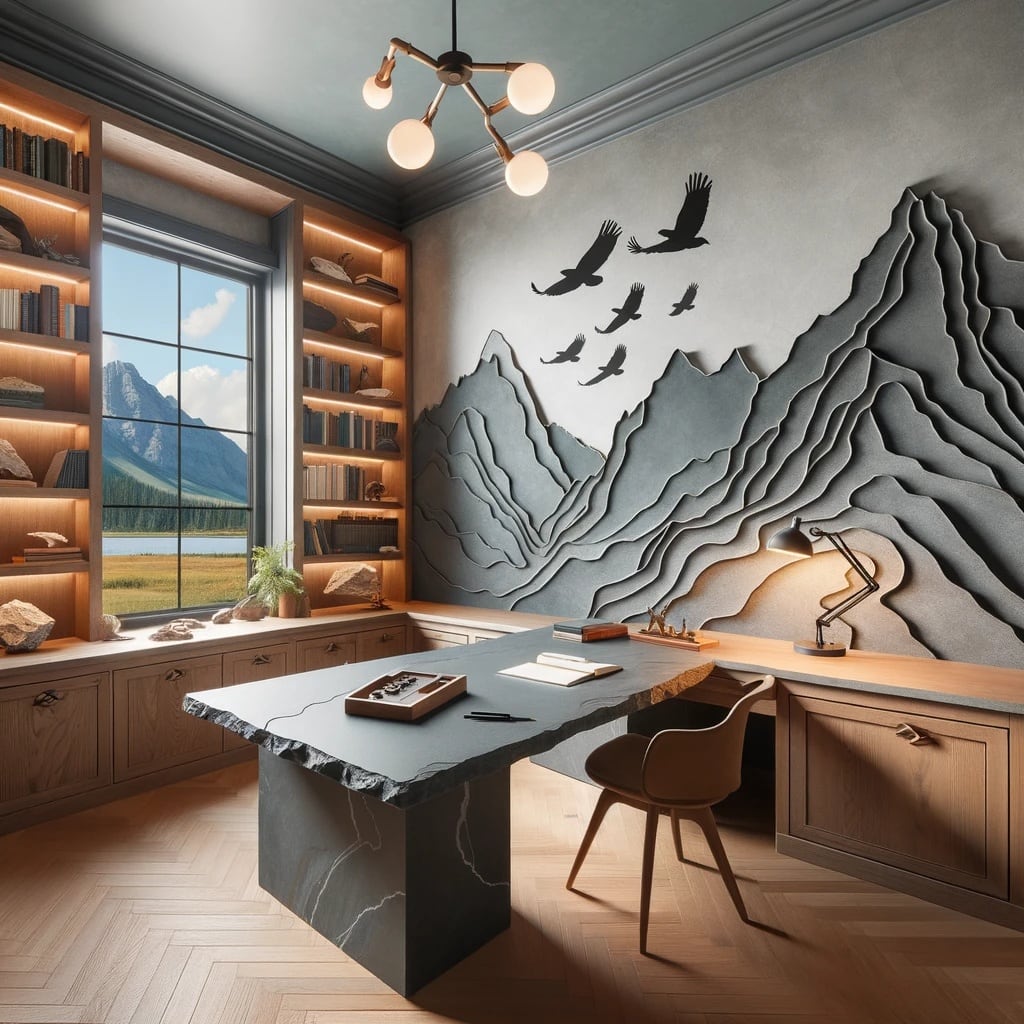
Wood, stone, jute, linen, leather, and brick conjure a sense of the outdoors. Use these textural materials for floors, walls, furniture, and textiles. Salvaged wood has an especially rustic appeal. However, verify any virgin materials are sustainably sourced.
Mimic Nature’s Shapes
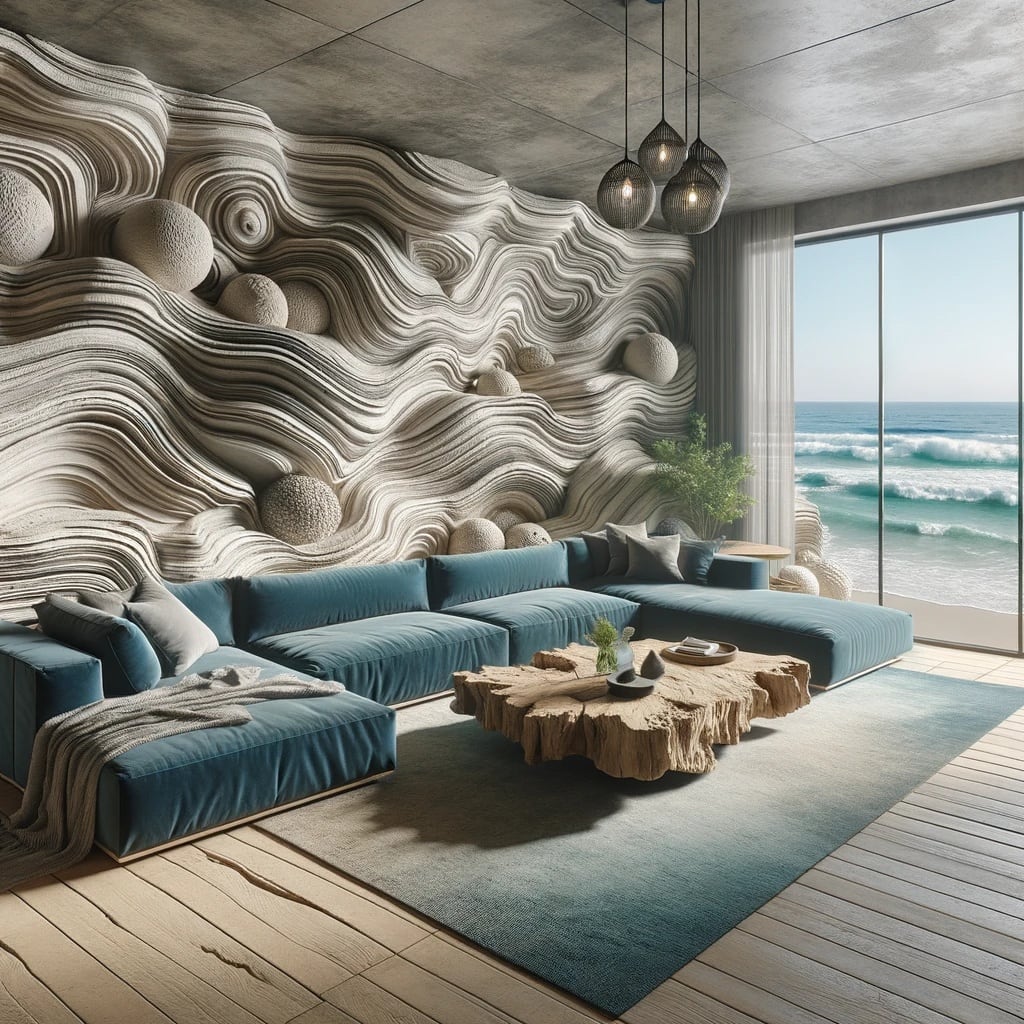
Curved lines and organic forms are inherently relaxing, while sharp corners and edges feel jarring. Look for furniture and decor with rounded, asymmetric, or botanical shapes.
For example, oval coffee tables, woven pendant lights, and vine-patterned pillows.
Showcase Natural Views

Frame window views of gardens, trees, landscapes, or the sky. Consider sightlines when arranging space. Let greenery be visible from the seating areas.
Hang art featuring flowers, forests, water, or animals. Images of nature are biophilic too.
Add Water Features

The presence and sound of water have restorative effects. Place a small indoor fountain or wall waterfall in a gathering space or install a backyard pond.
The splashes and ripples add a tranquil biophilic ambiance.
Use Organic Patterns

Patterns from nature, like branches and leaves, engage our biophilia. Use textiles and rugs with botanical or organic motifs. Or display wall coverings mimicking natural fractals and textures like stone, bark, coral, or feathers.
The Advantages of Biophilic Design
Studies show that biophilic design offers numerous scientifically-proven benefits:
- Reduced stress and improved mood: Views of nature and foliage have measurable positive impacts on mental health.
- Increased productivity and focus: Natural elements spark creativity, keep us alert, and help us concentrate.
- Faster healing: Hospital patients with window views of nature recover more quickly.
- Stronger immunity: More exposure to microbes from the outdoors may bolster immune function.
- Lower blood pressure and heart rate: Indoor plants and natural materials help regulate biometric markers.
Beyond health perks, biophilic spaces also tend to feel more uplifting and welcoming. The textbook definition may be “love of living things,” but biophilic design essentially translates to love of space.
Considering that most Americans spend about 90% of their time indoors, biophilic design of indoor spaces can greatly help in improving the quality of life and reduce stress levels.
Maximize Biophilic Benefits
While any attempts to welcome nature inside are worthwhile, the more thoroughly you implement biophilic principles, the greater the impact. Here are some key ways to maximize health and wellness benefits:
- Incorporate multiple elements like views, daylight, plants, and natural materials rather than just one or two.
- Make biophilic design part of the earliest stages of interior planning rather than an afterthought.
- Create dedicated garden rooms or atriums abundant with greenery.
- Use biophilic principles throughout an entire home or workplace, not just occasional spaces.
- Strive for permanent biophilic design upgrades rather than temporary accents whenever feasible.
Additionally, work with qualified biophilic design professionals whenever possible. They can help develop spaces tailored specifically to nurture wellness for inhabitants.
Examples of biophilic interior design: here are some creative concept designs of exciting trend!
Glacial Bathroom Design

This design embodies the tranquility of icy landscapes with a palette of cool whites and pale blues, reminiscent of glaciers.

Natural elements like stone and water features create a serene, natural spring-like ambiance, complemented by minimalistic fixtures and ample natural light.
Rocky Cave Home Spa

A rugged yet comforting space, the rocky cave home spa integrates rough stone textures with warm, subdued lighting. The design captures the essence of a secluded cave, offering a unique, earthy retreat for relaxation.
Tropical Forest Bathroom

The Tropical Forest Bathroom merges lush greenery with bright, natural light. This vibrant space is filled with tropical plants and uses materials like bamboo and teak to create an immersive, rainforest-like experience.
Lush Forest Bathroom

Inspired by dense woodlands, the Lush Forest Bathroom combines deep greens and rich browns with organic textures. The use of natural materials and forest-themed decor creates a serene, woodland sanctuary.
Jungle Bedroom

The Jungle Bedroom is a bold, adventurous space, featuring vibrant jungle motifs, rich green hues, and exotic animal prints. It’s a lively and immersive environment that captures the wild essence of a dense jungle.
Canyon Oasis Bathroom
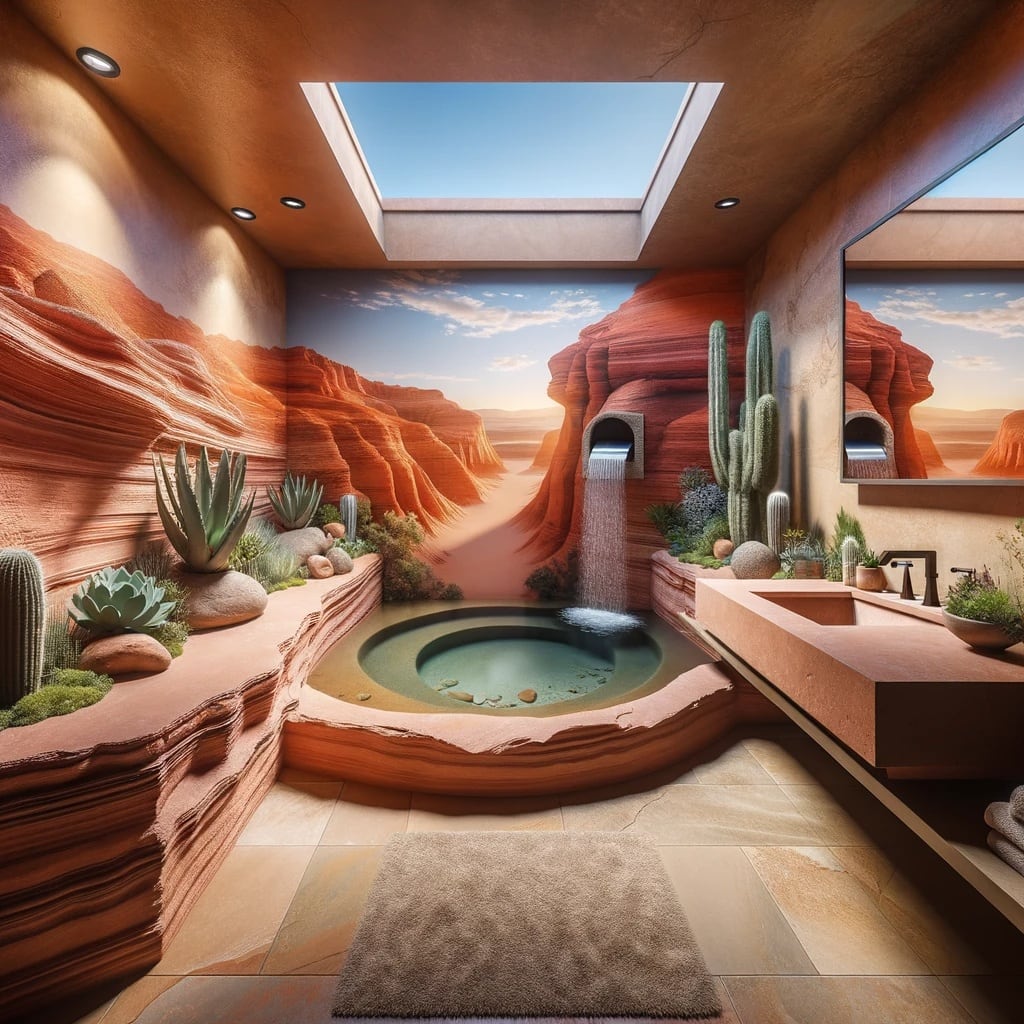
The Canyon Oasis Bathroom embodies the grandeur of canyon landscapes with warm, earthy tones and natural stone textures. This design includes elements like a free-standing tub and cascading water features, evoking a desert retreat.
Space Travel Bedroom

Futuristic and imaginative, the Space Travel Bedroom uses sleek, modern design and technological elements to create the feeling of being in a spacecraft. Cool metallics and ambient lighting contribute to a cosmic ambiance.
Wooden Cocoon Bedroom

The Wooden Cocoon Bedroom offers a warm, intimate setting, using rich wood tones and soft, curved lines. The design creates a cocoon-like feel, providing a cozy, enclosed space that’s perfect for unwinding.
Desert Dunes Bedroom

Inspired by arid landscapes, the Desert Dunes Bedroom features sandy hues, minimalist decor, and organic textures. This tranquil space mimics the serene vastness of a desert, providing a peaceful, uncluttered environment.
Fairytale Lake Bedroom

Enchanting and whimsical, the Fairytale Lake Bedroom incorporates soft blues and greens, with decor elements that mimic water and flora. This magical space transports you to a serene lakeside setting, reminiscent of a storybook scene.
Mangrove Forest Bedroom

The Mangrove Forest Bedroom brings the unique ecosystem of mangroves indoors with its blend of aquatic and botanical themes. Wooden elements and shades of green and blue create a peaceful, naturalistic setting.
Mountain Glacier Bedroom
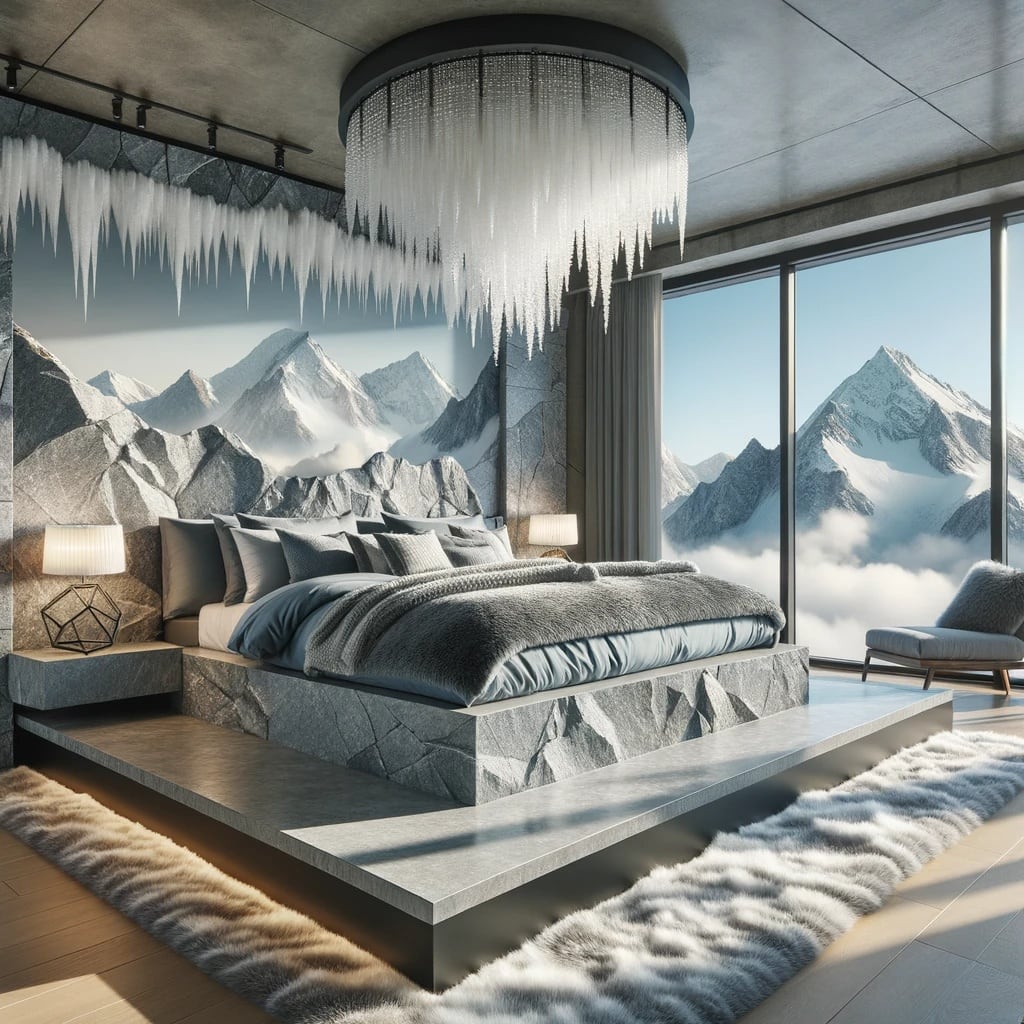
Reflecting the majestic beauty of high altitudes, the Mountain Glacier Bedroom combines icy blues and whites with sleek, modern lines. The design evokes the crisp, fresh atmosphere of mountainous glaciers.
Cave in the Desert Bedroom

The Cave in the Desert Bedroom merges the coolness of a cave with the warmth of a desert. Neutral tones, textured walls, and minimalistic decor create a unique blend of serenity and ruggedness, akin to a desert hideaway.
Conclusion
Biophilic design of your home can tap into our innate human affinity for nature to create calmer, healthier indoor environments. By thoughtfully integrating elements like natural light, materials, shapes, and greenery, we can easily make our homes and workplaces more inspiring and tranquil havens.
The benefits of biophilic principles are scientifically proven and their applications are remarkably versatile. With just a few simple upgrades, you can start experiencing the rejuvenating effects immediately.
Biophilic interiors not only look great but feel great. This interior home decor trend, like other related architectural ones (organic architecture), actively nurtures our bodies, minds, and souls.
Related topics:
- Organic architecture concept designs

